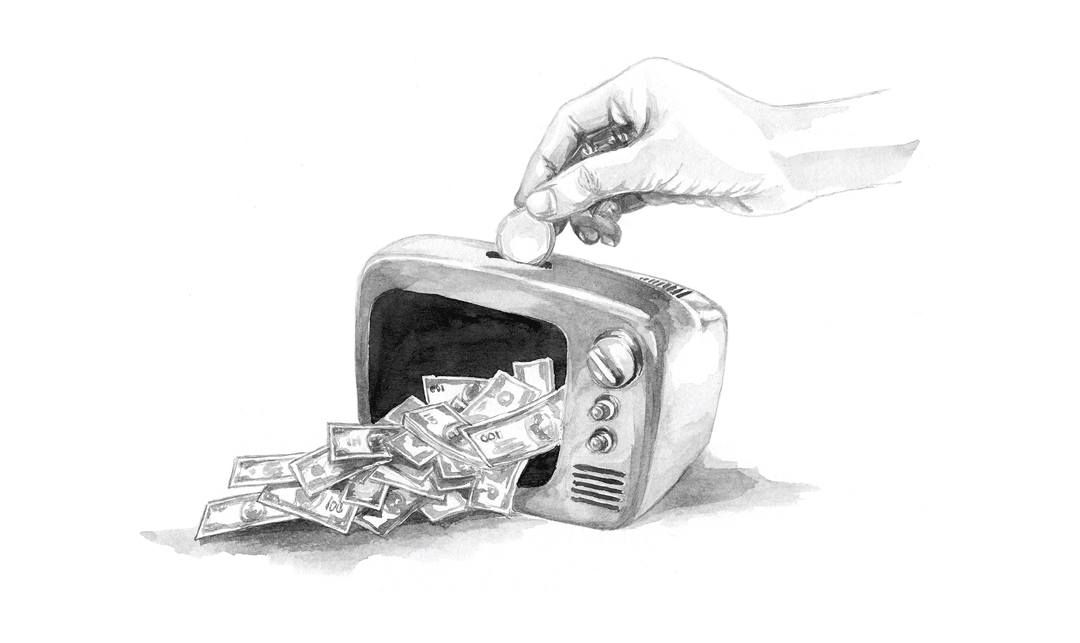This is an extraordinary time to be in the television business. There is currently more quantity and higher quality in original programming produced, viewed, and monetized than ever before, feeding the insatiable appetite of today’s video consumer. There is a seemingly endless number of channels and platforms: Netflix, Apple, Amazon, Hulu, YouTube, HBO Go/Now, Sling, Roku, and more. Some people are cutting the cords on their multichannel systems. And everyone seems to be watching new things in new ways. Change is always difficult, but it can also make for amazing opportunity. In fact, today is probably the best time ever for great TV. Total viewership is on a meteoric rise. Americans spend more than 12 hours a day consuming some form of media, according to research firm eMarketer. And the majority of that time involves watching a TV screen. It’s only going to get better for the people who make television—and for viewers. It’s a dynamic and exciting time to be in the business of creating, monetizing, and marketing compelling content. Let me share some of the things our agency has learned about navigating this exceptional time in the television business, and how to avoid some pitfalls.
1. Traditional broadcast isn’t dead.
It’s tempting to see the five broadcast networks—ABC, CBS, Fox, NBC, and The CW—as dinosaurs. Their roots go back decades, and they’re competing against some pretty compelling and technologically sophisticated upstarts. But these great brands are not in their twilight. Broadcast shows still have the power to dominate conversation and attention. For example, our agency has packaged the ABC comedy Modern Family and The Big Bang Theory as well as The Good Doctor and The Blacklist. These shows all consistently generate substantial audiences, in some instances surpassing 20 million viewers. These shows have proven staying power and will create a memorable experience for viewers, delivering many millions of dollars in revenue for years to come. There are examples of this all over broadcast TV. Certain types of shows—“big-tent” experiences with appeal for many different audiences—will thrive there. New hits like This Is Us and The Good Doctor prove that while it may be a 70-year-old format, viewers still flock to network TV.
2. New platforms are liberating and represent enormous opportunity.
We represent actors, producers, directors, writers, and other creative elements on shows like Game of Thrones, The Handmaid’s Tale, Westworld, and The Leftovers. Cutting-edge shows like these probably couldn’t have been done—certainly not without artistic compromises—in the regulated environment of broadcast television. But they are finding loyal viewers on cable and on new on-demand platforms, where the producers can be as daring as they want. These platforms are creating new niches. They thrive on water-cooler conversation that fuels their position in the zeitgeist as well as lively social media debate. They’re not driven by advertising revenue, so they allow for more creative freedom. They target specific audiences in the hopes that viewers will subscribe. And all that has spurred some welcome changes in the world of creative development. You don’t have to make a 22-episode season anymore simply because that’s the way the network schedule has been planned since the late 1940s. If a creator wants to tell the story in 8 episodes instead of 22 and it works creatively, that is now made possible by new and emerging formats. That’s been a night-and-day change for creative people. If you realize you can tell a great story over just a few episodes, possibilities are then opened up to ideas never before considered. And the creative freedom is attracting a lot of A-list movie people to TV projects. Just consider the big-name talent on display in Big Little Lies and True Detective.
Many creatives from the feature film business have moved into the television business in search of new opportunity, leading to increased competition for sellers.
3. It’s a great time for IP.
In the past, movies often came from novels, while newspaper and magazine stories often fueled smaller, independent films. But the rush for new programming means producers are on a constant prowl for unique and compelling intellectual property. And that can come from anywhere. Not just a novel or a magazine article, but a blog or even a Twitter feed could furnish that crucial inspiration for a series. This is why ICM is aggressively scouting for new talent among a new generation of influencers. We signed the comic Quinta Brunson because her online videos showed a proven knack for connecting with younger viewers. We also recently clinched deals with HuffPost Media and Politico that will leverage content from those websites across multiple platforms.
The appetite for on-demand content—and the direct-to-consumer models that go along with it—are driving a creative renaissance. If people like content in one place, they’re going to at least try it in another. This is just one way the online world has helped content creators deliver for their fans. Diversifying a content “portfolio” is the key to success in the long term.
4. Selling is still tough — maybe even tougher.
Sometimes the uninitiated can think, “Wow, so many outlets are airing so much content that it must make selling a breeze.” Wrong. What it means, often, is that buyers are more attuned than ever to the needs of their niche audience. That means they have fewer, not more, concepts that can conceivably work. As a seller, you have to have an explicit sense of each platform and who their audiences are. That task is even more crucial because many creatives from the feature film business have moved into the television business in search of new opportunity, leading to increased competition for sellers. What will work on Hulu isn’t necessarily what will work on Netflix or YouTube.
5. Get ready for a winnowing — but not a mass die-off.
Despite predictions of a mass extinction after the era of “peak TV” subsides, we take a much brighter view. We think it’s much more likely that, while some of the weakest players may expire or consolidate, the industry will wind up with something like 300 viable outlets. That’s more than enough, in other words, for long-term prosperity. Will there be winners and losers? Absolutely. But there has probably been too much focus on a shakeout, at the expense of a well-informed emphasis on maximizing opportunities.
If you consider all the evidence, this is why we believe the outlook for TV has never been brighter. Navigating this new landscape will take constant attention, an entrepreneurial spirit, and a willingness to embrace change













































